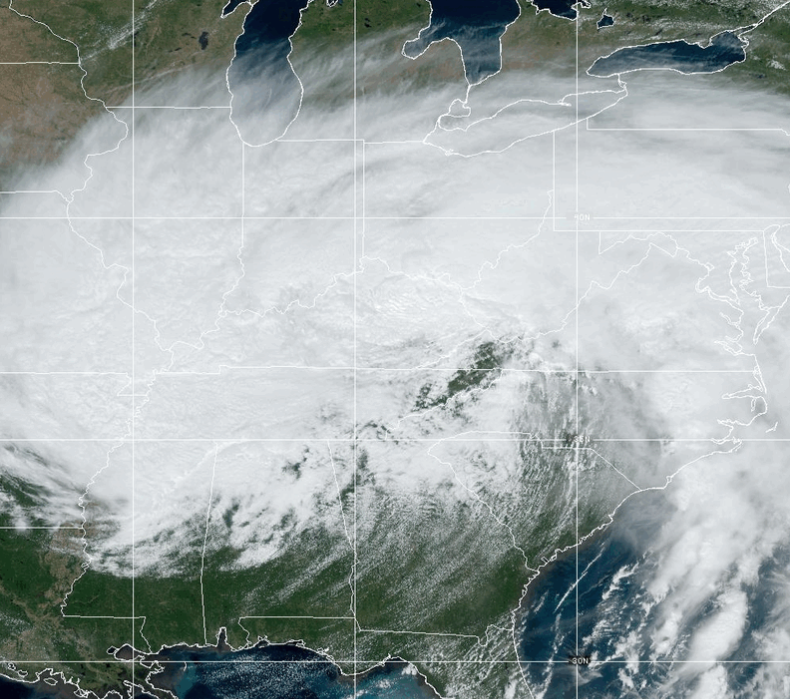Hurricane Season: Potential Changes To Federal Disaster Assistance

Table of Contents
The Current State of Federal Disaster Assistance
Major Programs and Their Funding
The Federal Emergency Management Agency (FEMA) plays a central role in providing Federal Disaster Assistance after hurricanes and other natural disasters. Its major programs include Individual Assistance, Public Assistance, and the Hazard Mitigation Grant Program.
Funding for these programs comes primarily from the federal budget, allocated through a complex process involving Congressional appropriations and presidential declarations of major disasters. The budgetary process can be influenced by various factors, including the severity and frequency of disasters, competing national priorities, and political considerations. This means funding levels can fluctuate from year to year.
- Individual Assistance: Provides grants for temporary housing, home repairs, and other essential needs to individuals and families affected by disasters.
- Public Assistance: Offers grants to state and local governments and certain private non-profit organizations to repair or replace disaster-damaged public infrastructure.
- Hazard Mitigation Grant Program: Provides funding for long-term mitigation projects designed to reduce future disaster losses. This includes things like elevating homes, strengthening infrastructure, and improving land use planning.
Eligibility Requirements and Application Processes
Eligibility for Federal Disaster Assistance depends on several factors, including the location of the damage, the type of damage, and the individual's or community's circumstances. Generally, assistance is available only in areas designated as federal disaster areas by the President.
The application process typically involves submitting a request for assistance through FEMA's website or by phone. Applicants must provide documentation supporting their claims, which may include proof of residency, insurance information, and detailed descriptions of the damage.
- Required Documents: Proof of residency (utility bills, driver's license), photographs or videos of damage, insurance policies, bank statements.
- Application Process: Online application via DisasterAssistance.gov, phone applications, in-person assistance at designated centers.
Potential Changes in Federal Disaster Assistance
Legislative and Policy Shifts
Ongoing debates in Congress concerning disaster relief funding and program design could lead to significant changes in Federal Disaster Assistance. These shifts might involve alterations to eligibility criteria, funding levels, or the types of assistance provided. Proposed legislation could focus on streamlining the application process, increasing funding for mitigation efforts, or shifting the balance between individual and public assistance.
- Potential Impacts: Increased or decreased funding, stricter eligibility requirements, changes in the types of assistance offered (e.g., more emphasis on loans vs. grants).
- Monitoring Changes: Staying updated on proposed legislation through official government websites and news sources is crucial for understanding potential impacts.
Impact of Climate Change on Disaster Assistance
The increasing frequency and intensity of hurricanes due to climate change pose significant challenges for Federal Disaster Assistance programs. More frequent and severe storms lead to increased demand for aid, placing a strain on resources and potentially overwhelming the system's capacity to respond effectively. This necessitates a shift towards more proactive mitigation strategies and adaptation measures.
- Increased Demand: More frequent and severe storms translate to higher numbers of applicants for aid and larger-scale damage requiring more extensive funding.
- Resource Strain: The current system might struggle to meet the increased demand, leading to delays in aid distribution and potential funding shortfalls.
Preparing for Hurricane Season with Awareness of Potential Changes
Individual Preparedness Strategies
Developing a comprehensive personal disaster preparedness plan is crucial. This includes creating an emergency kit, developing an evacuation plan, and securing adequate insurance coverage. Knowing what to expect from Federal Disaster Assistance will help you better prepare for the aftermath of a hurricane.
- Emergency Kit Essentials: Water, non-perishable food, first-aid supplies, medications, flashlights, batteries, important documents (copies).
- Insurance Coverage: Review your homeowner's or renter's insurance policy to understand its coverage for hurricane-related damage. Consider supplemental flood insurance.
Community-Level Preparedness
Local and state governments play a vital role in disaster preparedness by coordinating emergency response efforts, implementing mitigation strategies, and providing information to residents. Community-based disaster response and mitigation efforts are essential for building resilience.
- Community Initiatives: Participating in community-organized preparedness exercises, volunteering with local emergency response organizations, supporting local mitigation projects.
- Government Resources: Staying informed about local and state emergency plans, attending public information sessions, registering for emergency alerts.
Conclusion
Understanding the complexities of Federal Disaster Assistance is crucial during hurricane season. Potential changes in legislation, funding, and the increasing frequency of severe weather events necessitate a proactive approach to preparedness. By familiarizing yourself with current programs, eligibility requirements, and potential shifts in policy, you can better protect yourself and your community. Stay informed about changes to Federal Disaster Assistance programs and develop a comprehensive preparedness plan to navigate the challenges of hurricane season. Don't wait until a hurricane strikes – prepare for the possibility of needing Federal Disaster Assistance now.

Featured Posts
-
 Analyzing Shedeur Sanders Nfl Readiness The Numbers Dont Lie
Apr 26, 2025
Analyzing Shedeur Sanders Nfl Readiness The Numbers Dont Lie
Apr 26, 2025 -
 Mission Impossible Dead Reckoning Part Two Big Game Spot Breakdown
Apr 26, 2025
Mission Impossible Dead Reckoning Part Two Big Game Spot Breakdown
Apr 26, 2025 -
 Hungarian Central Bank Accused Of Fraud Investigation Launched
Apr 26, 2025
Hungarian Central Bank Accused Of Fraud Investigation Launched
Apr 26, 2025 -
 Selling Sunset Star Highlights Post Fire Landlord Price Gouging In La
Apr 26, 2025
Selling Sunset Star Highlights Post Fire Landlord Price Gouging In La
Apr 26, 2025 -
 Blue Origin Rocket Launch Cancelled Vehicle Subsystem Problem
Apr 26, 2025
Blue Origin Rocket Launch Cancelled Vehicle Subsystem Problem
Apr 26, 2025
Latest Posts
-
 Patrick Schwarzenegger From Ariana Grande Video To White Lotus A Career Retrospective
Apr 27, 2025
Patrick Schwarzenegger From Ariana Grande Video To White Lotus A Career Retrospective
Apr 27, 2025 -
 Patrick Schwarzeneggers Forgotten Ariana Grande Music Video Role A White Lotus Connection
Apr 27, 2025
Patrick Schwarzeneggers Forgotten Ariana Grande Music Video Role A White Lotus Connection
Apr 27, 2025 -
 Romantic Alaskan Escape Ariana Biermanns Adventure
Apr 27, 2025
Romantic Alaskan Escape Ariana Biermanns Adventure
Apr 27, 2025 -
 Ariana Biermanns Chill Alaskan Vacation With Her Partner
Apr 27, 2025
Ariana Biermanns Chill Alaskan Vacation With Her Partner
Apr 27, 2025 -
 Alaska Adventure Ariana Biermanns Romantic Trip
Apr 27, 2025
Alaska Adventure Ariana Biermanns Romantic Trip
Apr 27, 2025
